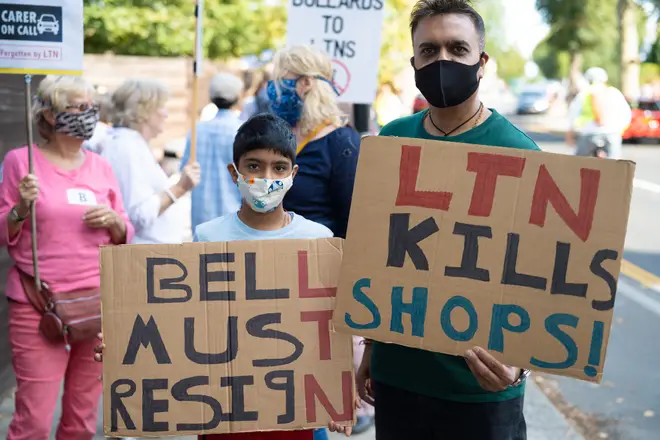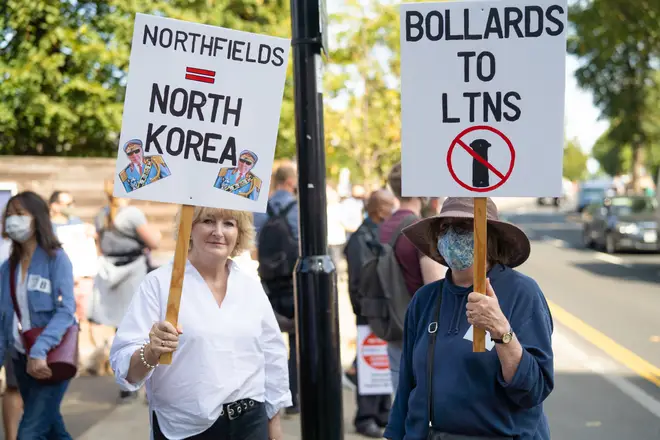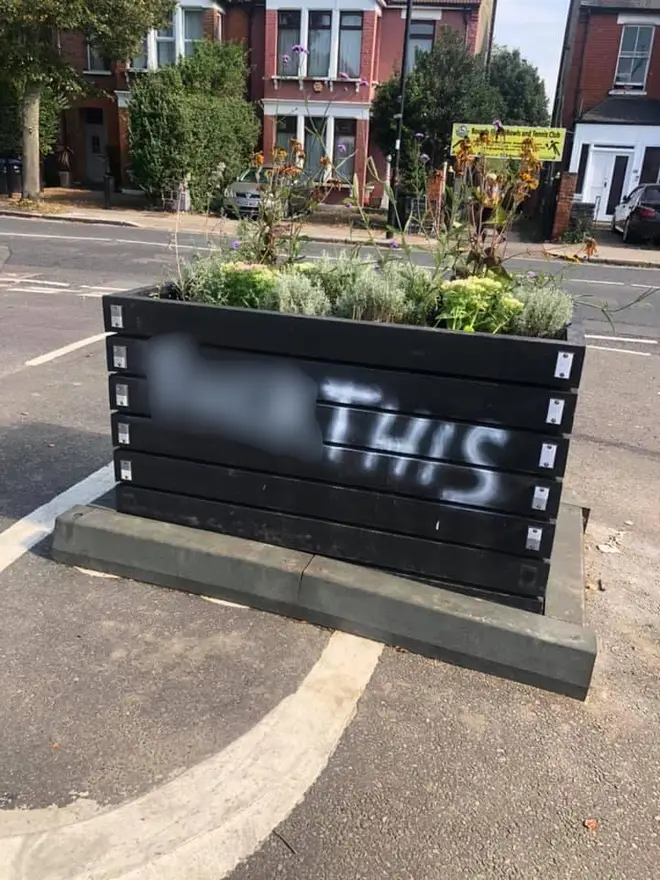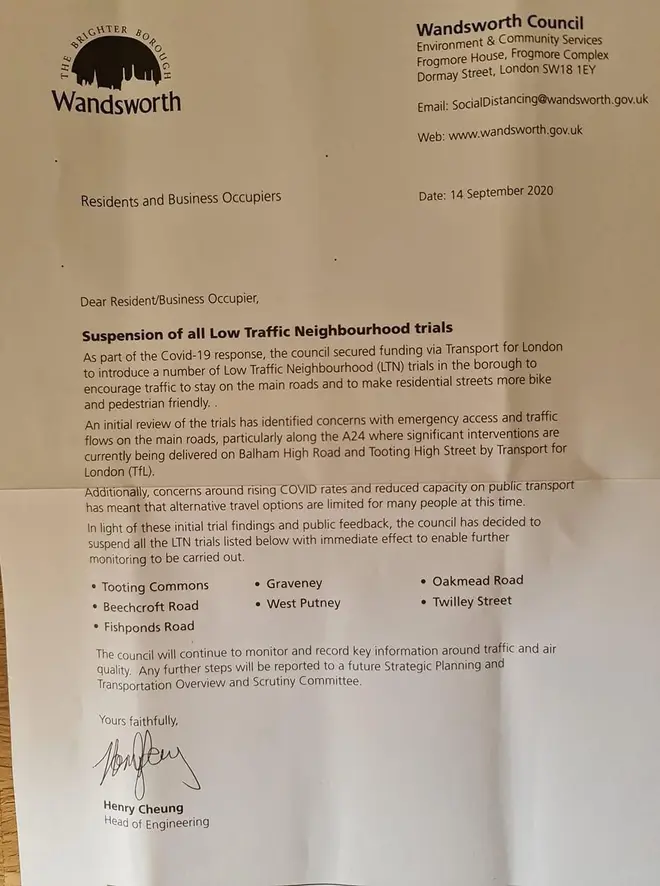
Clive Bull 1am - 4am
17 September 2020, 10:32

LBC Investigates Low Traffic Neighbourhoods
Residents across England are up in arms as their local roads are being shut down by councils with next to no consultation to create so-called "Low Traffic Neighbourhoods".
They are supposed to reduce pollution, and encourage more walking and cycling, and are championed by the Department for Transport, which has provided the funding to many local councils.
But they are having all sorts of unplanned effects, not least of which is an impact on the responses of emergency vehicles.
Bollards and plant pots have been erected on key roads in the middle of London, but are not marked on any maps or sat navs. As a result, they are obstructing all sorts of traffic, including ambulances.
We asked the London Ambulance Service if they had concerns, and they told us in a statement:
"Changes to road lay outs or traffic management schemes clearly have the potential to impede our response to the most critically ill people and could delay life-saving treatments or conveyance to the nearest emergency department.
“We will continue to discuss these issues at the emergency services group, made up of local authority traffic teams and TfL, as well as make representations on schemes at a local level where necessary."

And the London Ambulance Service isn't alone, the pattern is repeated all over England. Richard Webber, the spokesman for the College of Paramedics, said: “We fully understand the implementation of the traffic calming measures, but in several cases they’ve been brought in very quickly with very little consideration for emergency vehicle access. There are often cases where the ambulance is called to somebody suffering from a heart attack or a stroke, in the worst case even a cardiac arrest, where literally minutes and seconds can make a difference.
"All we would ask is that where these measures are implemented, consideration is given to access.”
Protests have been taking place all over London against the schemes, and a number of the planters put in to block traffic have been vandalised.
A huge part of the problem is the lack of consultation. One of the conditions of the funding from the Department for Transport is that the money must be used within 8 weeks, or it is clawed back.
So councils have adopted a ‘do first, ask later’ policy. In places like Enfield, they've put up these barriers a "trial" which could last anything from 6 to 18 months.

Large protests against such a scheme took place in Enfield at the weekend. One of the organisers, Roland Hewes, told LBC: “This was really sprung on us. The first we knew of it was a leaflet through our door. Not consulting with the people who use these roads before something like this is implemented is a big mistake. There’s road traffic dangers, pollution dangers, it’s too much to risk without doing the assessments first.”

The Department for Transport itself has now admitted that some of the schemes have been damaging. They said in a statement that: "We expect local authorities to engage constructively with residents to make sure any changes they make, such as introducing low-traffic neighbourhoods, are the right ones for everyone.
“We have not hesitated to withhold funding from councils who did not demonstrate their schemes would be genuine improvements - and we will continue to scrutinise future applications very closely."

Conservative-led Wandsworth Council has just suspended its scheme, saying it had caused chaos and actually worsened pollution.
Certainly, the thousands of residents who took to the streets in London at the weekend would like their councils to follow suit.
Editing by EJ Ward